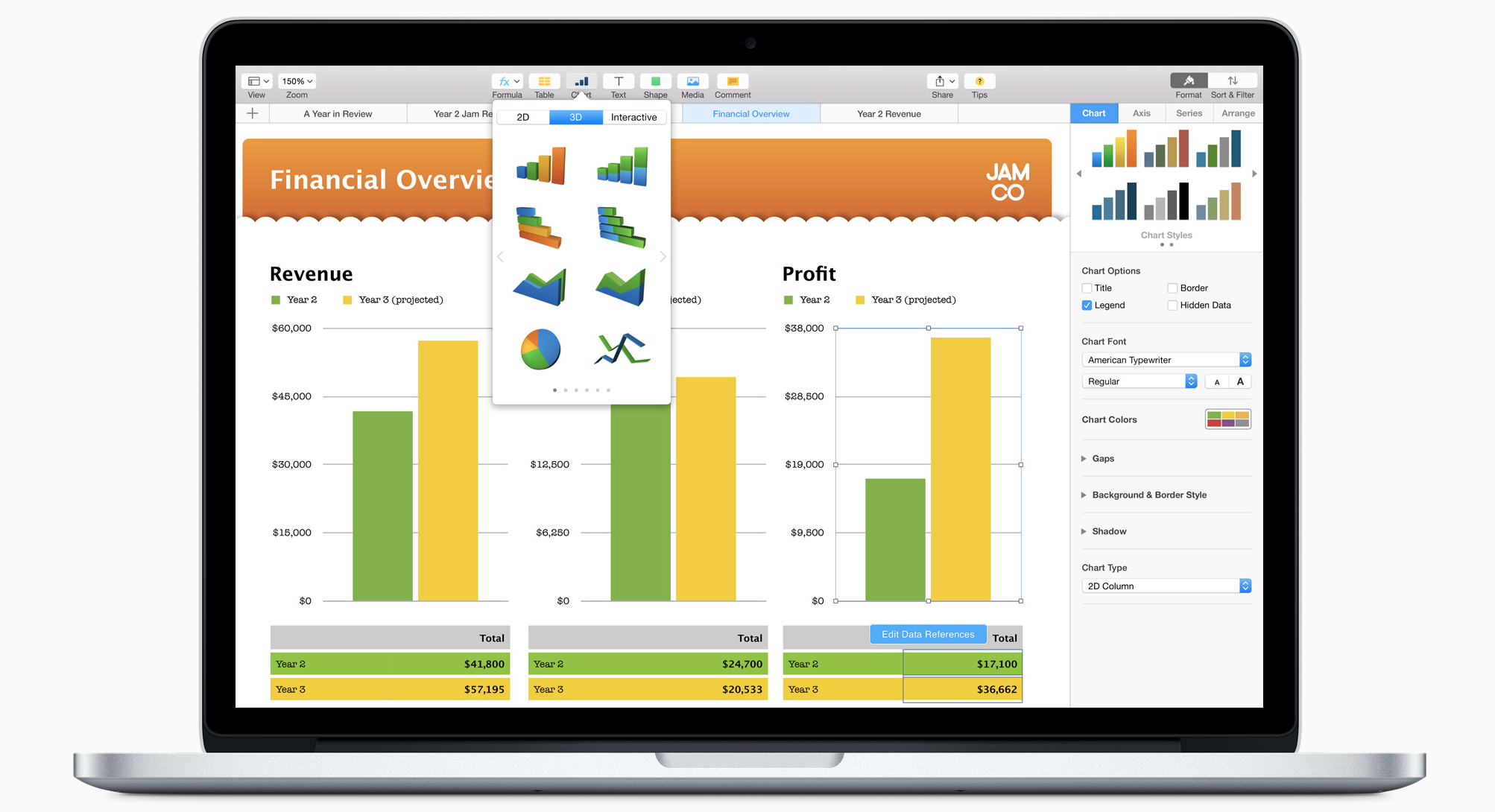

- #Icloud and iwork for mac how to
- #Icloud and iwork for mac install
- #Icloud and iwork for mac update
- #Icloud and iwork for mac full
- #Icloud and iwork for mac Pc
With a few clicks you can scan a document using the camera on your iPhone and insert the scanned text or table into your document.Įach of the iWork apps uses proprietary formats by default, which means that Pages documents won’t open in any app except for Pages (or Page's online version), and Numbers and Keynote documents will open only in Numbers or Keynote. For example, you can insert a photo, scanned document, or free-form sketch that you created with your fingertip or Apple Pencil on an iOS device into a document on your Mac.
#Icloud and iwork for mac full
Pages, Numbers, and Keynote are full of features that make them seamless to use across Apple’s entire ecosystem. (Opens in a new window) Read Our LibreOffice Review Doing so gets you 5GB of online storage and access to the Pages, Numbers, and Keynote browser apps. If you own an Apple device, the three apps are free to download and come preinstalled on desktop systems. Regardless of whether you own an Apple device, anyone can sign up for a free iCloud account. On the whole, other rival office suites, including our Editors' Choice winner Microsoft 365 Personal, offer better features and compatibility. If you find Apple’s apps sufficient for your needs, they’re a pleasure to use, and they offer unique features that you won’t find elsewhere-but which only relatively few users will need. Whether Apple wants you to think of them as a suite, all three share a unique graphic-centric approach. Pages, Numbers, and the Keynote presentation app are the three parts of an office suite that Apple’s website calls iWork but aren’t identified as such elsewhere. Both programs have features that you won’t find in any rival software, and their native file formats can't be read by any other apps.
#Icloud and iwork for mac how to
How to Set Up Two-Factor AuthenticationĪpple paved its own path when creating the Pages word processor and Numbers spreadsheet apps.
#Icloud and iwork for mac Pc
How to Record the Screen on Your Windows PC or Mac.How to Convert YouTube Videos to MP3 Files.How to Save Money on Your Cell Phone Bill.How to Free Up Space on Your iPhone or iPad.How to Block Robotexts and Spam Messages.The growing popularity of Macs in the enterprise sector has made them an increasingly popular malware target. While the most common types are still adware – which hijack your browsers to replace ads with ones hosted by the attacker – more dangerous types do exist. Malwarebytes recently published a 30-page report, which details the most common Mac malware. You should of course only ever download apps from the Mac App Store or from trusted developer websites. Last month, for example, well-hidden cryptomining malware was found inside pirate copies of Final Cut Pro. However, it would be trivial to give the app a more convincing name and icon.
#Icloud and iwork for mac install
You would need to manually install and run the app, and then enter your Mac password to grant it access to System Settings for it to work. Second, it appears to have been distributed via an app called Weed, with a marijuana icon. First, it isn’t digitally signed, so will be blocked by Gatekeeper on most Macs. While the malware is powerful, it’s exceedingly unlikely that 9to5Mac readers would fall for it. But the risk to tech-savvy users is very low
#Icloud and iwork for mac update
However, this type of attack doesn’t require Apple to update macOS to block it: such malware can be blocked by a simple update to X-Protect. Apple released updates for macOS Big Sur, Monterey, and Ventura on Monday, but based on the security notes, those updates do not appear to include patches for MacStealer. It’s unclear if MacStealer has been logged in the CVE.report database that tracks vulnerabilities and exposures, and Apple has not commented on the malware. The report says Apple doesn’t appear to have blocked it. Once run, the malware gathers the data, compresses it all into a single zip file, sends the file to the bad guys, and then deletes the file from your Mac. According to information Uptycs gathered from the dark web, MacStealer’s makers are working on the ability to harvest Safari passwords and cookies, as well as data in the Notes app. zip, and it can extract the Ke圜hain database. It can extract several different file types, including. Uptycs found that MacStealer can get passwords, cookies, and credit card data from Firefox, Google Chrome, and Microsoft Brave browsers. The good news, however, is that you’d have to be very naive to fall victim to it … MacStealer The malware extracts your iCloud passwords, a wide variety of files, and credit card details stored in browsers. Security researchers have identified a new piece of Mac malware, which they’ve dubbed MacStealer.


 0 kommentar(er)
0 kommentar(er)
